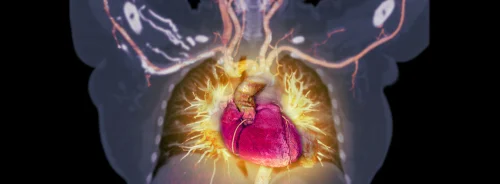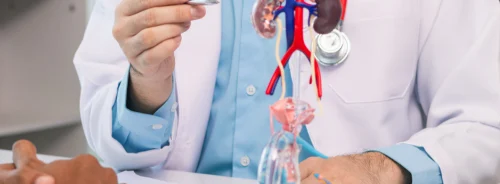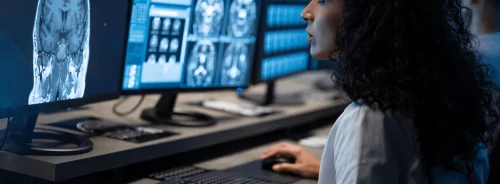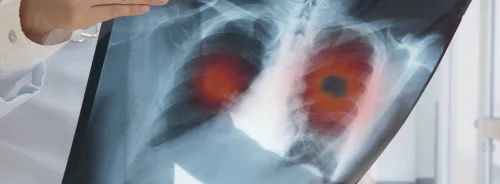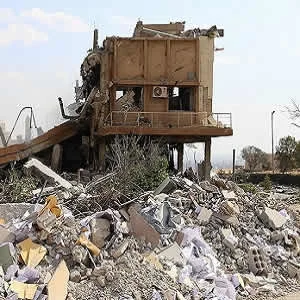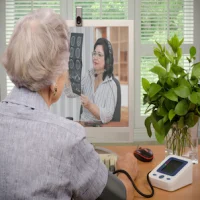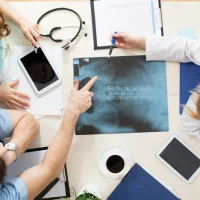Syria's healthcare system is also a victim of the ongoing conflict in this Western Asian country. Amidst reports of selective targeting of medical facilities and personnel, the World Health Organization issued alarming statements regarding such attacks on healthcare facilities and providers throughout the country reaching a critical level of emergency.
"Since the beginning of the Syrian crisis in 2011, 485 medical facilities were bombed and 841 medical personnel were killed. This deprived a growing number of people from urgent and basic medical care," according to an article published online in Journal of the American College of Radiology.
To address this problem, field hospitals have been established to provide first aid and advanced medical care. However, field hospitals are largely managed by undertrained physicians and medical personnel and lack basic medical infrastructure.
"Mass casualties and traumatic injuries require emergent response and management, best guided by radiology services and personnel," the article says. "Unfortunately, numerous obstacles challenge the delivery of radiology services in these field hospitals, specifically in areas under siege."
For example, in Ghouta, a suburb located 9 miles east of the capital city downtown, Damascus, only several portable ultrasound machines, radiography machines, and one functional four-slice CT scanner are available. There is no MR scanner within reach. There is no PACS, and studies are read off the scanner directly.
Ghouta's population has dropped to 400,000 people, from 1.2 million people before the crisis. Two local radiologists used to serve the Ghouta area under siege, one attending and one resident. The attending radiologist was severely injured during an air strike in 2015 and was eventually evacuated after long intensive care unit stay. Currently, only one radiology resident serves the entire Eastern Ghouta.
In response to the shortage of on-site radiologists, the Syrian American Medical Society established the Teleradiology Relief Group (TRG) in February 2015 to provide diagnostic reports to the besieged Ghouta, where power, landlines, and internet services are barred by the regime since 2013.
The group works like it's an underground operation. The TRG uses a secret Facebook group, a WhatsApp group, and a Telegram group (Telegram, Dubai, UAE). Access to the TRG social media groups is strictly limited to clinicians inside Ghouta and remote radiologists. All group members have access on their cell phones and personal computers, which are password-protected.
The TRG is composed of four volunteer board-certified radiologists and two volunteer radiology residents across different time zones providing 24-7 coverage. Using satellite internet service, the local clinicians publish a Facebook post in the secret group. In addition to radiological images, the post includes the patient’s identifiers, age, chief complaint, vital signs, relevant physical examination, laboratory results, and the course of care. Radiological images are posted in JPEG or DICOM formats.
Important challenges to the TRG's work included: lack of intravenous contrast when interpreting CT scans (particularly in trauma cases), even contrast-enhanced CT scans were of low diagnostic yield because of the poor quality scanners, lack of qualified technicians, and difficulty in interpreting JPEG images because of the inability to modify the window or level and the lack of proper sequence. Comparison with previous studies was another challenge because of the lack of archiving system, unless the case was previously interpreted and discussed in the group.
"Despite all these challenges, the TRG project has been sustained for three years and is thriving," the article notes. "The work is entirely volunteer-based and the cost of the TRG project is null." Between February 2015 and January 2018, 497 radiological examinations were interpreted by the TRG, including 374 CTs (75%), 119 plain films (24%), and 4 ultrasounds (1%).
Although not studied, the article says, the clinical impact of the TRG project on improving patient care inside besieged Ghouta is sensible.
Image Credit: Fathi Nizam
References:
Masrani A et al. (2018) Delivering Humanitarian Teleradiology Services to Besieged Areas in Syria. J Am Coll Radiol. Article in Press, Published online: May 25, 2018 https://doi.org/10.1016/j.jacr.2018.03.052
Latest Articles
Emergency, teleradiology, Syria, medical facilities, Teleradiology Relief Group
Syria's healthcare system is also a victim of the ongoing conflict in this Western Asian country. Amidst reports of selective targeting of medical facilities and personnel, the World Health Organization issued alarming statements regarding such attacks on

